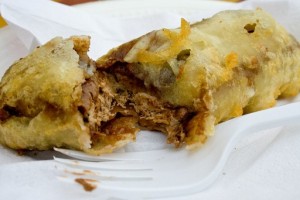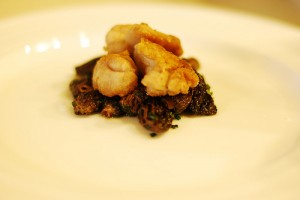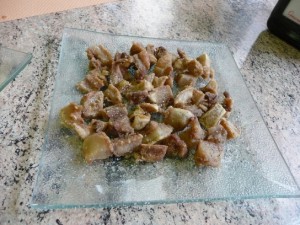Trying new foods is one of the most wonderful aspects of travel and for some, the weirder, the better. Of course, few people ever get hooked on those fear factor foods that make for interesting travel tales and a fun Facebook photo – deep fried grasshoppers, beating cobra hearts, scorpion on a stick or a whole sheep’s head eaten out of the skull – but there are weird eats across the globe that actually taste good . Here are eight foods that sound all wrong, but taste so right.
Deep fried Mars Bar (Scotland)

Invented in a Scottish chip shop, the Deep Fried Mars Bar sounds like something that started as a drunken craving and should have remained that way. It’s a bold idea – you take one of planet Earth’s least healthy foodstuffs, a creation loaded with calories, sugar and fat, then you devise a way to make it even less healthy. The chocolate bar is coated in the type of batter usually reserved for fish, then deep fried. The result? A deliciously gooey mess tasting something like a chocolate pastry – a taste so good in fact that you can forgive the 420 calories each serving contains.
Poutine (Canada)
French fries, cheese curds and meaty gravy. When you first hear about Canada’s best known snack, it just sounds wrong, like something you could only eat after a night on the Labbatt Blue. And indeed, it does work best as a hangover remedy. The perfect poutine is all about layering and it’s all about love. The fries must be golden, the gravy rich and the cheese curds squeaky between your teeth. Hangover or not, you’ll be surprised at how well meat gravy goes on a portion of cheese!
Morcilla (Spain)
It’s served around the world in many guises and it never sounds good. You boil up a pot of animal blood (pig is most common, though bovine, ovine and other variations are not unheard of), add some cereal or grain to thicken it up, cool until congealed and stuff into a casing made from intestines. It’s often as utterly unappetising as it sounds, but in Spain they actually manage to make boiled blood taste good! Rice adds a little texture to the otherwise glutinous sausage, spices distract the taste buds from an overly bloody flavour and the practice of frying the sausage in slices rather than boiling it whole means that for once, you can chew on blood and actually enjoy it, if that’s something you yearn to do…
Sweetbreads (worldwide)

Of all the foods featured here, sweetbreads is the one most often found in fine dining. And like other haute cuisine ingredients (foie gras and caviar to name a couple), sweetbreads are one of those foodstuffs you perhaps shouldn’t think about too much. Don’t be fooled by their cakey name – this is not something you want to eat for dessert or as part of afternoon tea. Sweetbreads are in fact the thymus gland of a calf or lamb – a highly prized piece of offal. Served a wealth of ways around the world, in fine dining they’re usually poached in milk, breaded and fried and when done well can almost live up to their charming name.
Dead body soup (South Korea)
OK, so this is not the dish’s official title and its Korean moniker does not translate as anything corpse-related. This scary name actually stems from an urban legend in which Korean students studying abroad were questioned by local police when neighbours thought they smelt the aroma of rotting flesh wafting under the door. In fact they were simply cooking Cheonggukjang, a soup prepared with fermented soy bean paste and plenty of chilli. The result might smell a little like a pair of sneakers you ran a marathon in without any socks, but if you can get past the aroma, and you enjoy plenty of flavour and plenty of spice, you’ll find Dead Body Soup a delicious, hearty and very affordable lunch.
Pork rinds/pork scratchings (worldwide)

You might be quite familiar with this popular pub snack and think there’s nothing odd about eating it. It’s salty, it’s porky, it tastes great with a beer – what’s weird about that? But pork rinds are the epitome of foods that shouldn’t taste good, but do. It’s a hunk of animal skin, often with a chunk of fatty flesh still attached and sometimes with the occasional hair protruding from an overlooked follicle. On paper it seems like something most people would never dream of eating, but in practice it’s a little lump of loveliness, bristly hairs and all!
Mole poblano (Mexico)
It sounds like something a student would make after a night in the bars. You get home, realise you have virtually nothing to eat and so you empty the contents of your fridge into a pan: chilli, garlic, raisins, onions, tomatoes, nuts, chicken and chocolate. When the ingredients are listed, this meal appears an atrocious concoction, but in fact it is one of Mexico’s most identifying dishes, notoriously difficult to make and revered by foodies everywhere. Mole poblano sounds wrong; it looks wrong but it tastes like what it is – a complex dish featuring more ingredients than a supreme pizza that has taken hundreds of years to perfect. Genius on a plate.


